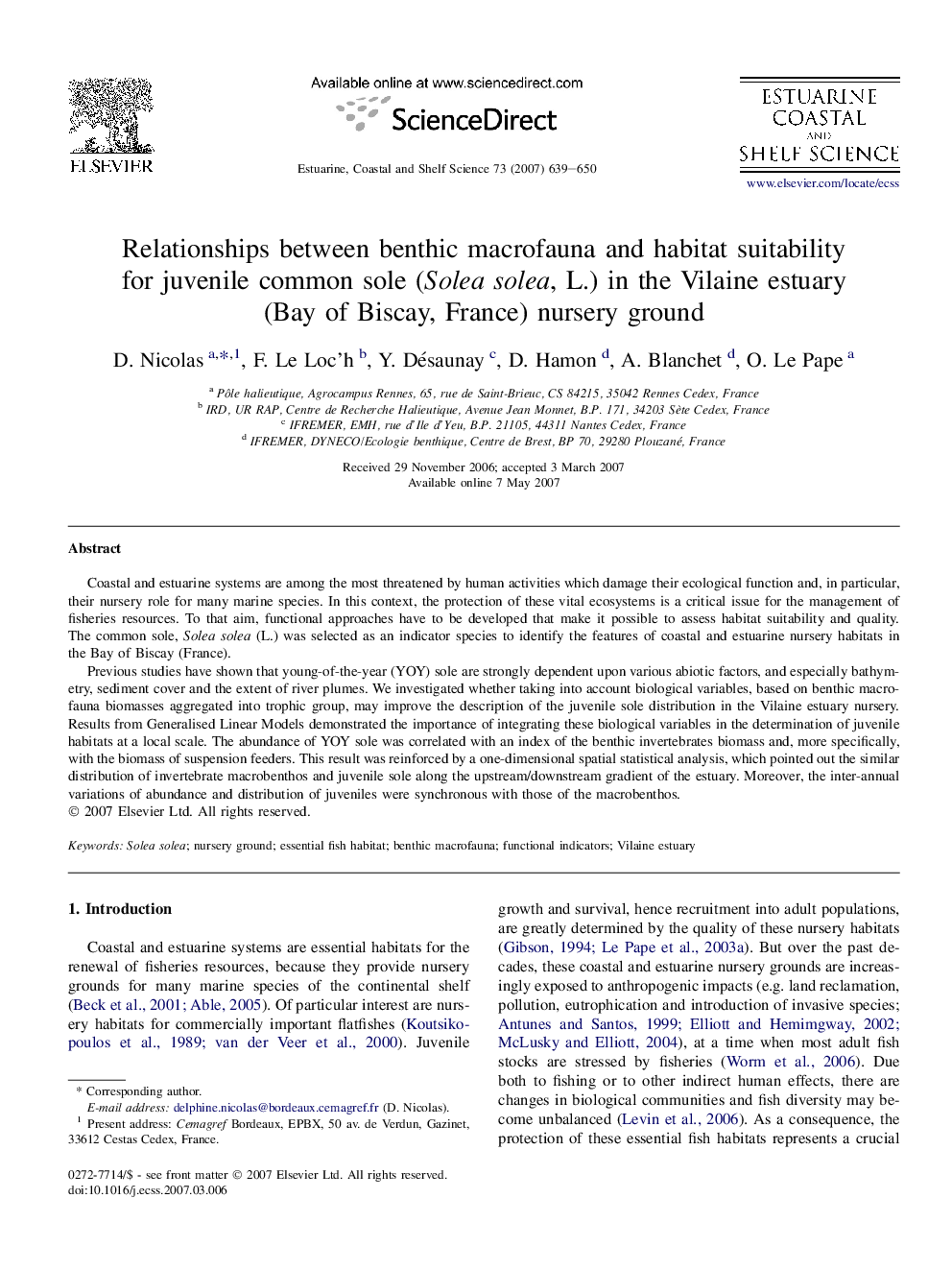| Article ID | Journal | Published Year | Pages | File Type |
|---|---|---|---|---|
| 4541800 | Estuarine, Coastal and Shelf Science | 2007 | 12 Pages |
Coastal and estuarine systems are among the most threatened by human activities which damage their ecological function and, in particular, their nursery role for many marine species. In this context, the protection of these vital ecosystems is a critical issue for the management of fisheries resources. To that aim, functional approaches have to be developed that make it possible to assess habitat suitability and quality. The common sole, Solea solea (L.) was selected as an indicator species to identify the features of coastal and estuarine nursery habitats in the Bay of Biscay (France).Previous studies have shown that young-of-the-year (YOY) sole are strongly dependent upon various abiotic factors, and especially bathymetry, sediment cover and the extent of river plumes. We investigated whether taking into account biological variables, based on benthic macrofauna biomasses aggregated into trophic group, may improve the description of the juvenile sole distribution in the Vilaine estuary nursery. Results from Generalised Linear Models demonstrated the importance of integrating these biological variables in the determination of juvenile habitats at a local scale. The abundance of YOY sole was correlated with an index of the benthic invertebrates biomass and, more specifically, with the biomass of suspension feeders. This result was reinforced by a one-dimensional spatial statistical analysis, which pointed out the similar distribution of invertebrate macrobenthos and juvenile sole along the upstream/downstream gradient of the estuary. Moreover, the inter-annual variations of abundance and distribution of juveniles were synchronous with those of the macrobenthos.
